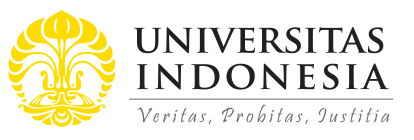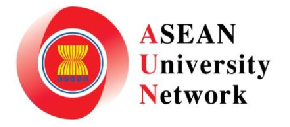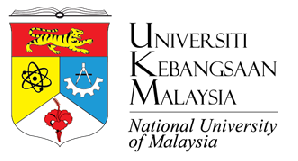
Abstract
This study evaluates the enforcement of public health protocols in deciding the COVID-19 distribution chain. The evaluation is based on contributions among international students in higher education and examined their experiences and activities engaging in activities against the COVID-19 epidemic. The research focuses on the collaborative activities of students of Universiti Tun Hussein Onn Malaysia with Sultan Maulana Hasanuddin State Islamic University Banten, Indonesia. Through observation and direct and online involvement with the community, the study is qualitative and employs an inductive approach. Survey feedback was received in collaboration with five students from each university. This study is qualitative using an inductive approach, through observation and direct interaction with the community. The results show that there are still among the public in Santri Village who ignore the dangerous threat of COVID-19 to their health. The results also found that the community did not fully implement the health protocol. This study proposes a more detailed study of the attitudes of communities ignoring the dangerous threat of disease outbreaks to themselves. This collaboration faces constraints from the point of view of not yet yielding optimal results and requiring more creative efforts to help the community increase their awareness to carry out health protocols in times of disaster.
References
Akhirianto, N. A. (2017). Community Based Landslide Disaster Risk Reduction a Design Concept. Jurnal Sains dan Teknologi Mitigasi Bencana, 12(1), 32-43.
http://dx.doi.org/10.29122/jstmb.v12i1.3698
Amponsah, S., Kwesi, A. B., & Ernest, A. (2019). Lin’s creative pedagogy framework as a strategy for fostering creative learning in Ghanaian schools. Thinking Skills and Creativity, 31, 11-18. https://doi.org/10.1016/j.tsc.2018.09.002
Andriani, H. (2020). Effectiveness of Large-Scale Social Restrictions (PSBB) toward the new normal era during COVID-19 Outbreak: a mini policy review. Journal of Indonesian Health Policy and Administration, 5(2), 61-65.
http://dx.doi.org/10.7454/ihpa.v5i2.4001
Astuti, S. F., Nursyabania, L., Falih, M. J., Attamini, S. R., Rafli, M., & Musta’ina, S. (2020). Sosialisasi Adaptasi Kebiasaan Baru Di Rt 5/Rw 11, Kelurahan Kalisari, Kecamatan Pasar Rebo, Jakarta Timur Menghadapi Pandemi Covid-19. Jurnal Layanan Masyarakat (Journal of Public Services), 4(2), 448-455.
https://doi.org/10.20473/jlm.v4i2.2020.448-455
Bassani, P. S., & Buchem, L. (2019). Virtual exchanges in higher education: developing intercultural skills of students across borders through online collaboration. Revista Interuniversitaria de Investigación En Tecnología Educativa, 6, 22-36.
http://dx.doi.org/10.6018/riite.377771
Bereiter, C., & Scardamalia, M. (2003). Learning to work creatively with knowledge. Powerful Learning Environments: Unravelling Basic Components and Dimensions, 55-68.
https://www.researchgate.net/publication/200773318_Learning_to_work_creatively_with_knowledge
Berlinger, N., Wynia, M., Powell, T., Micah Hester, D., Milliken, A., Fabi, R., Cohn, F., Guidry-Grimes, L. K., Carlin Watson, J., Bruce, L., Chuang, E. J., Oei, G., Abbott, J., & Piper Jenks, N. (2020). Marco ético para las instituciones de atención médica y pautas para los servicios de ética institucional que responden a la pandemia del COVID-19. The Hastings Center, 2, 1-12.
https://www.thehastingscenter.org/wpcontent/uploads/HastingsCenterCovidFramework2020.pdf
Brake, S. J., Barnsley, K., Lu, W., McAlinden, K. D., Eapen, M. S., & Sohal, S. S. (2020). Smoking Upregulates Angiotensin-Converting Enzyme-2 Receptor: A Potential Adhesion Site for Novel COVID-19 SARS-CoV-2 (Covid-19). Journal of Clinical Medicine, 9(3), 841. https://doi.org/10.3390/jcm9030841
Broman, G. I., & Robèrt, K. H. (2017). A framework for strategic sustainable development. Journal of Cleaner Production, 140, 17-31.
https://doi.org/10.1016/j.jclepro.2015.10.121
Care, E., Kim, H., Vista, A., & Anderson, K. (2018). Education system alignment for 21st century skills Focus on assessment. https://eric.ed.gov/?id=ED592779
do Paco, A., Shiel, C., & Alves, H. (2019). A new model for testing green consumer behaviour. Journal of Cleaner Production, 207, 998-1006.
https://doi.org/10.1016/j.jclepro.2018.10.105
Friend, M., & L. Cook. (2012). Interactions – Collaboration Skills for School Professionals 7th ed. New York: Longman.
Hatchuel, A., & Le, P. (2018). Design theory: a foundation of a new paradigm for design science and engineering. Research in Engineering Design, 29(1), 5-21.
https://doi.org/10.1007/s00163-017-0275-2
Jaakkola, E. (2020). Designing conceptual articles: four approaches. AMS Rev, 10, 18-26.
https://link.springer.com/article/10.1007/s13162-020-00161-0
Jaffe, L. E., Lindell, D., Sullivan, A. M., & Huang, G. C. (2019). Clear skies ahead: optimizing the learning environment for critical thinking from a qualitative analysis of interviews with expert teachers. Perspectives on Medical Education, 8(5), 289-297.
https://link.springer.com/article/10.1007/s40037-019-00536-5
Le, T. T., Dawkins, B. A., & McKinney, B. A. (2020). Nearest-neighbor Projected-Distance Regression (NPDR) for detecting network interactions with adjustments for multiple tests and confounding. Bioinformatics, 36(9), 2770–2777.
https://doi.org/10.1093/bioinformatics/btaa024
Ketua Pengarah Kasihatan Malaysia. (2020). Kenyataan Akhbar Ketua Pengarah Kesihatan Malaysia Situasi Terkini Jangkitan Novel COVID-19 di Malaysia.
http://covid-19.moh.gov.my/terkini/012020/situasi-terkini-26-jan-2020/05%20KPK% 2026012020.pdf
Krauss, S. E. (2005). Research paradigms and meaning making: A primer. The Qualitative Report, 10(4), 758-770. https://core.ac.uk/download/pdf/51086996.pdf
Mamadaliyeva, F. (2018). Morals and Ethics of Islam. Eastern European Scientific Journal, (6). http://journale.auris-verlag.de/index.php/EESJ/article/download/777/849
Mustam, B., & Daniel, E. S. (2018). Informal and formal environmental education infusion: actions of malaysian teachers and parents among students in a polluted area. MOJES: Malaysian Online Journal of Educational Sciences, 4(1), 9-20.
https://jice.um.edu.my/index.php/MOJES/article/download/12641/8132
Marinoni, G., Van’t Land, H., & Jensen, T. (2020). The impact of Covid-19 on higher education around the world. IAU Global Survey Report. IAU Global Survey Report.
https://www.iau-aiu.net/IMG/pdf/iau_covid19_and_he_survey_report_final_ may_2020.pdf
McGregor, S. (2018). Argumentative essays: position, discussion, and think-piece papers. In McGregor, S. Understanding and evaluating research (pp. 469-495). Thousand Oaks, CA: SAGE Publications, Inc. https://doi.org/10.4135/9781071802656
Nurhayati, N., & Suhardin, S. (2020). Komparasi Moderasi Keberagamaan Mahasiswa Universitas Tadulako Dan Iain Palu: Sebuah Studi Kualitatif. Al-Qalam, 26(2), 339-352. http://dx.doi.org/10.31969/alq.v26i2.873
Prayitno, S. A., Pribadi, H. P., & Ifadah, R. A. (2020). Peran Serta Dalam Melaksanakan Protokol Pencegahan Penyebaran Corona Virus Disease (Covid-19) Pada Masyarakat. DedikasiMU (Journal of Community Service), 2(3), 504-510.
http://dx.doi.org/10.30587/dedikasimu.v2i3.1657
Raman, R., Vachharajani, H., & Achuthan, K. (2018). Students motivation for adopting programming contests: Innovation-diffusion perspective. Education and Information Technologies, 23(5), 1919-1932. https://doi.org/10.1007/s10639-018-9697-3
Syahrin, M. A., Syaharuddin, S., & Rahman, A. M. (2020). Environmental Awareness of Kampung Hijau Society, Sungai Bilu Banjarmasin. The Kalimantan Social Studies Journal, 1(2), 191-200. https://doi.org/10.20527/kss.v1i2.2042
Taylor, H., & Peace, R. (2015). Children and cultural influences in a natural disaster: Flood response in Surakarta, Indonesia. International Journal of Disaster Risk Reduction, 13, 76-84. https://doi.org/10.1016/j.ijdrr.2015.04.001
World Health Organization. (2020a). WHO characterizes COVID-19 as a pandemic.
https://www.who.int/emergencies/diseases/novel-COVID-19-2019/events-as-theyhappen
World Health Organization. (2020b). COVID-19 disease 2019 (COVID-19): situation report, 82.
Yarbrough, D. B. (2017). Developing the Program Evaluation Utility Standards: Scholarly Foundations and Collaborative Processes. Canadian Journal of Program Evaluation, 31(3), 284-304. https://doi.org/10.3138/cjpe.349
Yazan, B., & De Vasconcelos, I. C. O. (2016). Three approaches to case study methods in education: Yin, Merriam, and Stake. Meta: Avaliacao, 8(22), 149-182.
https://doi.org/10.22347/2175-2753v8i22.1038
Yusrizal, Y. (2020). Tanggung Jawab Negara Terhadap Pengawasan Bantuan Sosial Selama Pandemi Covid-19. Suloh: Jurnal Fakultas Hukum Universitas Malikussaleh, 8(2), 21-36. https://doi.org/10.29103/sjp.v8i2.3065
Recommended Citation
Ismail, Faisal Husen; Rohmah, Rohmah; Ibrahim, Intan Nur Syaheera; and Wen, Cheam Kai
(2021).
International Student Collaboration in Efforts to Raise Public Awareness of COVID-19 Prevention.
ASEAN Journal of Community Engagement, 5(2).
Available at: https://doi.org/10.7454/ajce.v5i2.1125







